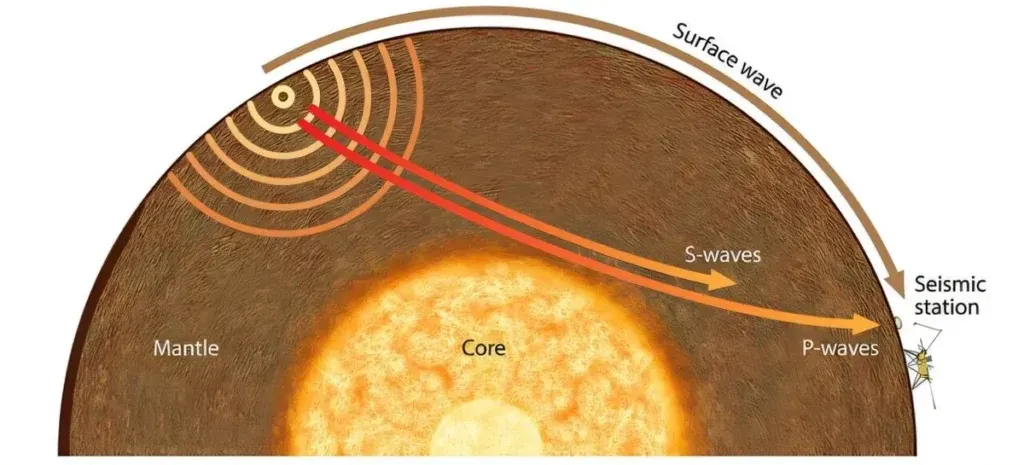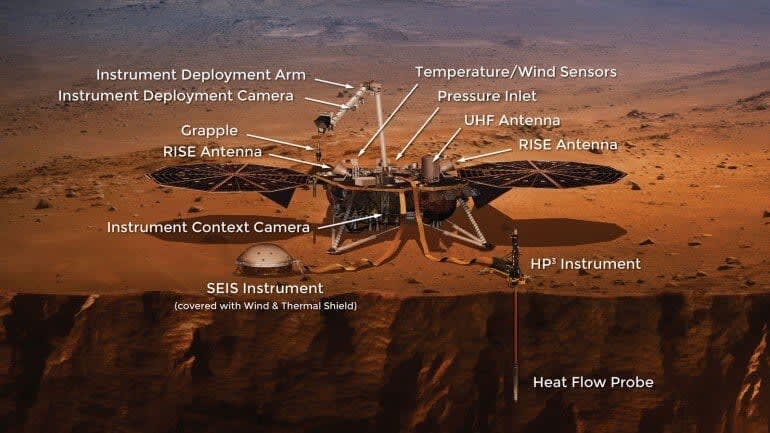Mars Hides Abundant Water Beneath Its Surface — Could Life Thrive There Too?

In 2024, researchers grabbed attention when they discovered substantial quantities of water within a stratum of Mars' crust. This particular layer resides between 11.5 to 20 kilometers beneath the planet’s surface and has an approximate thickness of 1-2 kilometers. These discoveries have now received additional support through a fresh investigation conducted by Japanese scientists.
By leveraging seismic information obtained from NASA’s InSight mission, scientists Ikuo Katayama at Hiroshima University and Yuya Akamatsu at the Research Institute for Marine Geodynamics have discovered significant indications of water concealed beneath Mars' surface.
numerous research papers indicate the existence of water on early Mars billions of years back,"Katayama stated."However,our model suggests that liquid water can be found on current-day Mars as well.
Tuning into the Heartbeat of Mars
Similar to the earlier research conducted by American scientists, this latest investigation relies on information gathered by the Seismic Experiment for the Interior Structure (SEIS). This highly precise instrument was placed on Mars by NASA's InSight lander back in 2018. The SEIS device aims at recording quakes within Mars as well as shockwaves triggered by collisions with space rocks. Just like disturbances spreading across water, these seismic vibrations contain valuable insights into what lies beneath the Martian surface.
When examining a planet’s insides using seismology, researchers primarily focus on two kinds of seismic waves: P-waves, similar to sound waves as they squeeze and stretch matter; and S-waves, which oscillate at right angles to their path forward. Only solid material allows passage for S-waves, whereas P-waves tend to decelerate when moving through lower-density substances. Through an examination of how fast these waves propagate and behave, experts can create detailed maps of what lies beneath the planetary surface.

Katayama and Akamatsu concentrated on two separate interfaces within the seismographic records, at which point the wave characteristics altered dramatically. They hypothesize that these shifts might signify the existence of water saturating fissures and cavities in the stone.
To verify this hypothesis, they examined diabase rocks sourced from Rydaholm, Sweden—a geological counterpart similar to the Martian crust. Through lab tests, they assessed the propagation of seismic waves within these samples when subjected to dry, moistened, and frozen states. As expected, their findings aligned with the seismographic data recorded on Mars.

What the Findings Mean
Mars could potentially have an underground reservoir of water sufficient to blanket its entire surface with an ocean ranging from 0.62 to 1.24 miles (1 to 2 kilometers) deep. Yet, since this water is locked within rocks, it would not be readily accessible—assuming it can even be retrieved. Nonetheless, the presence of such water sparks intriguing possibilities regarding the potential for microscopic organisms to thrive there.
If liquid water is found on Mars," Katayama stated, "it could indicate the potential for microbial activity.
This research adds to an increasing body of scientific work indicating that Mars was previously—and might still partially be—a planet with significant amounts of water. Satellite imagery has uncovered traces of old river channels and dried-up lakes, whereas rovers such as Curiosity have discovered minerals known for forming in aquatic environments. In last month’s findings, scientists revealed additional evidence that suggests initial indication of Martian shorelines .

Even though there is enthusiasm about the discovery, it includes several qualifications. If this water indeed exists, it is trapped far beneath the Martian surface, well out of reach for our present technological capabilities. Reaching such depths on Mars would necessitate extraordinary advancements in engineering. Additionally, seismological evidence alone isn’t enough to conclusively confirm the existence of water; alternative interpretations, like variations in mineral content within rocks, still stand as potential explanations.
Nevertheless, it's impressive that despite the InSight mission concluding in 2022, it continues to provide extraordinary scientific insights. Actually, the extensive seismic information collected has enough substance to occupy NASA researchers for up to ten years.
The results were published in the journal Geology .
The tale initially surfaced on ZME Science . Looking to become smarter each day? Subscribe to our newsletter and stay ahead with the latest science news.
Comments
Post a Comment